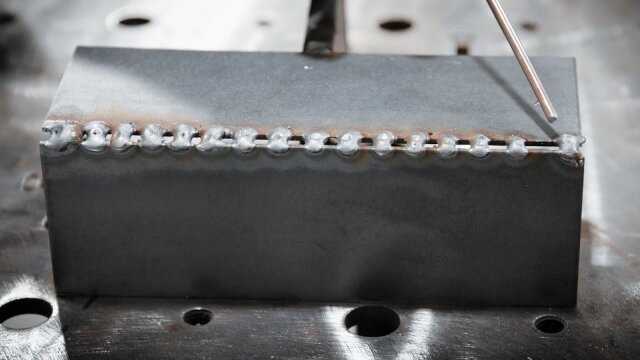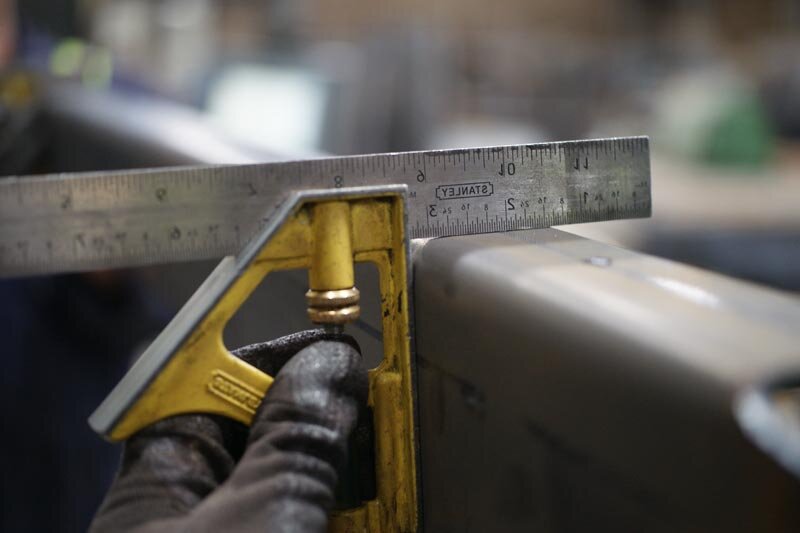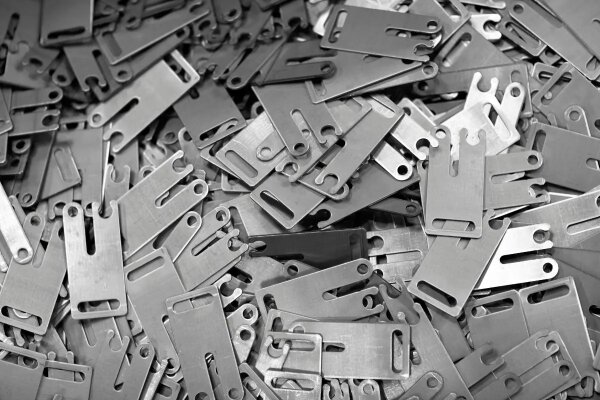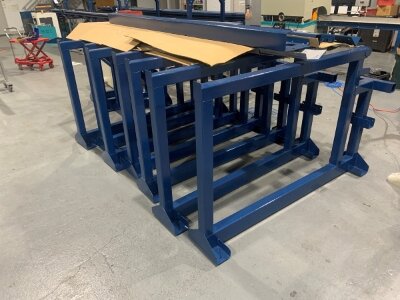강철은 공기 및 물과 접촉하면 녹이 슬기 때문에 많은 금속 프로젝트에 문제를 일으킵니다. 제품을 제작할 때는 거친 환경에서도 견딜 수 있는 강철이 필요합니다. 아연 도금 강철과 아연 도금 강철은 모두 보호 층을 추가하여 도움이 됩니다. 올바른 것을 선택하려면 각 유형의 작동 방식과 각 유형이 가장 효과적인 위치를 이해하는 것이 도움이 됩니다.
아연도금 강철은 순수 아연 코팅이 되어 있어 녹에 강하고 광택이 납니다. 반면 아연도금 강철은 아연 코팅 후 열처리하여 무광택이고 더 단단하며 도장하기 쉽습니다. 아연도금은 습한 장소나 외관이 중요한 곳에서 잘 작동합니다. 아연도금은 페인트가 묻거나 스크래치에 견딜 수 있는 표면이 필요한 경우에 가장 적합합니다.
제작 중 문제를 방지하려면 이 둘의 차이점을 아는 것이 필수적입니다. 프로젝트에 더 적합한 옵션을 선택하기 위해 기본 사항을 검토해 보겠습니다.
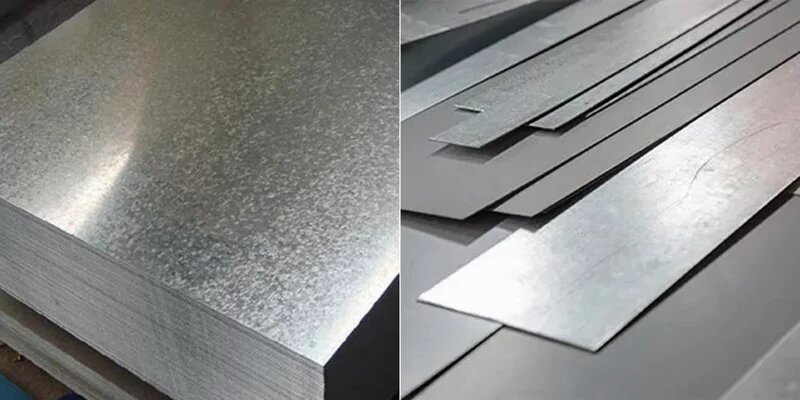
아연도금강판이란 무엇인가요?
아연도금강판은 녹을 방지하기 위해 아연으로 코팅한 강철입니다. 이 코팅은 강철을 용융 아연에 담가서 적용합니다. 아연 층이 표면을 덮어 습기와 공기가 강철 밑에 닿지 않도록 차단합니다.
아연 코팅이 금속을 보호합니다. 표면이 긁히더라도 아연은 스스로를 먼저 포기함으로써 녹과 싸웁니다. 이를 희생 보호라고 합니다.
이 과정은 강철을 청소하는 것으로 시작됩니다. 아연이 잘 부착될 수 있도록 먼지나 기름을 제거합니다. 이 작업은 용융 아연에 담그거나 전류를 사용하여 코팅을 적용하여 수행할 수 있습니다.
아연 도금 프로세스
아연 도금은 아연 층을 추가하여 강철을 보호합니다. 이 층은 습기와 산소가 강철에 닿는 것을 차단합니다. 아연을 도포하는 방법에는 크게 두 가지가 있습니다.
용융 아연 도금
이 방법은 강철을 용융 아연 용액에 고열로 담그는 방식입니다. 아연이 강철에 결합하여 두껍고 거친 코팅을 형성합니다. 강력한 보호 기능을 생성하고 가장자리와 모서리까지 강철을 고르게 덮습니다.
코팅은 반짝이는 광택 마감 처리되어 있습니다. 비, 눈, 염분과 같은 거친 환경에서도 견딜 수 있으며 실외 또는 고강도 애플리케이션에 자주 사용됩니다.
전기 아연 도금
전기 아연 도금은 전기를 사용하여 강철에 아연을 부착합니다. 더 얇고 매끄러운 코팅과 균일한 외관을 만들어냅니다.
이 방법을 사용하면 코팅 두께를 더 잘 제어할 수 있습니다. 외관이 중요하거나 부품이 서로 단단히 맞아야 하는 프로젝트에 적합합니다. 그러나 용융 용착보다 내식성이 떨어집니다.
아연 도금 강철의 주요 특성
- 녹 방지: 아연 코팅은 습기로부터 강철을 보호합니다.
- 내구성: 아연 층은 충격을 받으면서도 강철을 보호할 수 있습니다.
- 저렴한 비용: 스테인리스 스틸보다 저렴하지만 여전히 잘 보호됩니다.
- 반짝이는 마감: 반짝이는 외관은 눈에 잘 띄는 부분에서 매력적입니다.
- 유지 관리가 필요 없습니다: 한 번 코팅하면 수정이나 수리가 거의 필요하지 않습니다.
일반적인 사용 사례
- 야외 구조물: 울타리, 가드레일, 도로 표지판
- 건축 자재: 지붕 데크, 철골 골조, 배수로
- 농업용 도구: 곡물통, 물탱크, 트레일러
- 자동차 부품: 흙과 물을 마주하는 차대 부품
- HVAC 덕트: 내습성이 중요한 실내 환경
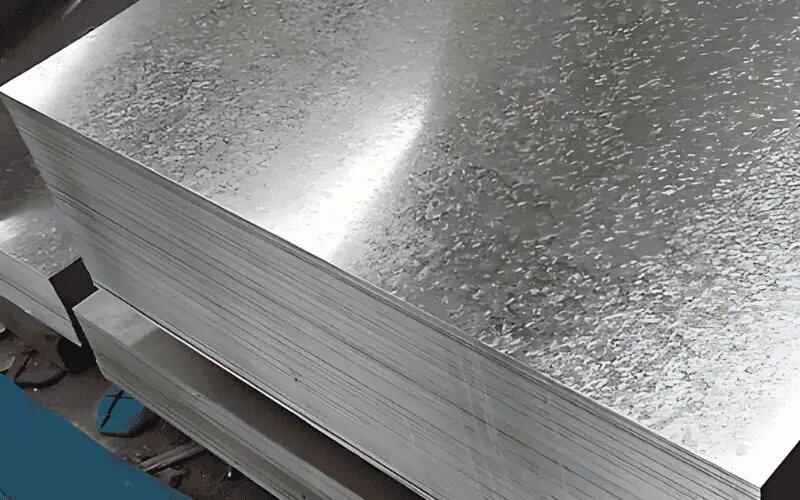
갈바니얼드 스틸이란?
아연도금강판은 아연 코팅을 한 후 열처리한 강철입니다. 이 과정을 통해 표면이 단단해지고 페인팅에 더 적합하게 변화합니다.
아연도금강판은 아연도금강판과 같은 방식으로 시작됩니다. 강철을 용융 아연 용액에 담가 보호 층을 입힙니다.
그 후 추가 단계를 거칩니다. 코팅된 강철을 다시 약 500~565°C로 가열합니다. 이 열로 인해 아연과 철이 혼합되어 새로운 아연-철 합금 표면층이 형성됩니다.
이 합금은 일반 아연 도금 강철보다 표면을 칙칙한 회색으로 거칠게 만듭니다. 광택이 나지는 않지만 더 강하고 페인트가 잘 붙습니다. 따라서 부품에 페인트를 칠할 때 아연도금강판이 더 나은 옵션입니다, 형성, 또는 용접된.
아연-철 합금 층의 형성
열처리 과정에서 아연 코팅은 강철 표면과 반응합니다. 이렇게 해서 일련의 아연-철 합금 층이 생성됩니다. 이 층은 강철에 단단히 결합됩니다.
일반 아연 도금 강철과 달리 이 코팅은 표면에만 있는 것이 아닙니다. 강철 외층의 일부가 됩니다. 그렇기 때문에 아연도금 강철은 더 균일하고 무광택 마감 처리가 가능합니다. 또한 성형 또는 용접 시 박리 현상도 방지합니다.
아연도금강판의 주요 특성
- 페인트 가능성: 거친 표면은 별도의 준비 없이도 페인트를 잘 붙잡습니다.
- 스크래치 방지: 단단한 아연-철 층이 취급 중 손상을 방지합니다.
- 용접성: 아연 도금 강철보다 더 깨끗하게 용접되며 스패터가 적습니다.
- 벗겨짐이 없습니다: 구부리거나 성형하는 동안 코팅이 제자리에 유지됩니다.
- 무광택 마감: 칙칙한 회색 표면은 페인트 또는 파우더 코팅.
공통 적용 분야
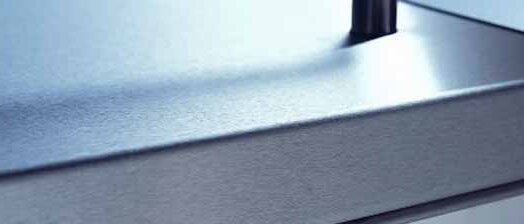
아연도금강판과 아연도금강판의 주요 차이점
두 코팅 모두 강철을 녹으로부터 보호하지만 실제 사용 시에는 다르게 작동합니다. 두 코팅의 차이점은 제조 방식과 가공 후 성능에서 비롯됩니다.
코팅 구성 및 구조
아연 도금 강철은 위에 순수한 아연 층이 있습니다. 아연은 담그는 과정에서 첨가되어 표면에 남아 있습니다.
아연도금 강철도 아연 코팅으로 시작됩니다. 하지만 두 번째 가열 단계를 거칩니다. 이 열은 강철의 철을 아연 층으로 끌어당깁니다. 그 결과 아연-철 합금이 더 단단하고 표면과 더욱 밀착되는 아연-철 합금이 탄생합니다.
내식성 비교
아연 도금 강철은 특히 실외 또는 습한 환경에서 더 나은 부식 방지 기능을 제공합니다. 두꺼운 아연층이 강력한 보호막 역할을 합니다.
갈바닐 처리된 강철은 코팅이 더 얇습니다. 여전히 녹으로부터 보호하지만 실내에서 사용하거나 페인트가 칠해지는 부품에 더 적합합니다.
모습
아연 도금 강철은 광택이 있고 반짝이는 질감이 있습니다. 외관이 중요한 곳에서 자주 사용됩니다.
갈바닐 처리된 강철은 무광 회색입니다. 균일하고 칙칙한 마감으로 페인트 칠하기는 쉽지만 노출된 상태로 두면 매력이 떨어집니다.
성형성 및 용접성
아연도금 강철은 너무 많이 구부리면 벗겨지거나 벗겨질 수 있습니다. 스트레스를 받으면 코팅이 깨질 수 있습니다.
갈바닐 처리된 강철은 코팅이 더 단단하게 유지됩니다. 성형과 용접에 더 잘 견딥니다. 코팅 손실이 적고 용접 시 연기나 튄 자국이 적게 발생합니다.
비용
아연 도금 강철은 일반적으로 더 저렴합니다. 아연 코팅이라는 한 단계만 거치면 되며 대량으로 생산됩니다.
갈바닐 처리된 강철은 추가 열처리로 인해 비용이 더 많이 듭니다. 하지만 추가 비용으로 시간을 절약하고 도장 또는 용접 결과를 개선할 수 있습니다.
갈바닐 처리된 강철과 아연 도금 강철: 장단점
각 코팅에는 분명한 장점과 단점이 있습니다. 프로젝트의 마감 요구 사항, 예산 및 작업 프로세스에 맞게 결정해야 합니다.
아연 도금 강철의 장점
- 특히 실외에서 강력한 녹 방지 기능
- 갈바닐 처리 대비 저렴한 비용
- 장식적인 매력의 광택 마감
- 더 연성화되고 구부리거나 모양을 만들기 쉬움
- 다양한 크기와 형태로 쉽게 사용 가능
아연 도금 강철의 단점
- 표면 준비 없이 페인트가 벗겨지거나 잘 접착되지 않을 수 있습니다.
- 용접 또는 성형 중에 코팅이 벗겨질 수 있습니다.
- 반짝이는 모양은 깔끔하거나 균일한 마감에 적합하지 않을 수 있습니다.
- 스폿 용접에는 적합하지 않음
- 습한 환경에서는 시간이 지나면 변색될 수 있습니다.
아연도금강판의 장점
- 별도의 표면 준비 없이도 페인트가 더 잘 접착됩니다.
- 무광택 마감으로 코팅을 위한 매끄러운 베이스 제공
- 용접 또는 성형 시 코팅이 벗겨지지 않습니다.
- 실내 산업용으로 잘 견딥니다.
- 아연 도금 강철보다 긁힘에 더 잘 견디는 표면
갈바닐 처리된 강철의 단점
- 도장하지 않고 방치하면 내식성이 약해집니다.
- 약간 더 비싸다
- 더 단단한 코팅은 일부 성형 작업에서 더 부서지기 쉬울 수 있습니다.
- 칙칙한 외관은 장식 부품에 적합하지 않을 수 있습니다.
- 아연 도금보다 덜 일반적이므로 리드 타임이 길어질 수 있습니다.
아연도금과 아연도금 중에서 선택하는 방법은?
올바른 강철 코팅을 선택하는 것은 금속을 어디에 어떻게 사용할 계획인지에 따라 다릅니다. 각 옵션은 각기 다른 유형의 프로젝트에 적합합니다.
부품이 페인팅되나요?
부품에 페인트를 칠할 계획이라면 갈바닐 처리된 강철이 더 좋습니다. 표면이 벗겨지지 않고 페인트가 잘 유지되며 무광택 마감 처리로 별도의 준비 없이도 강력한 접착력을 제공합니다.
아연도금 강철도 도장할 수 있지만 먼저 표면 처리가 필요합니다. 매끄럽고 기름기가 많은 코팅은 청소하고 적절하게 프라이밍하지 않으면 페인트가 벗겨질 수 있습니다.
프로젝트가 실외용인가요?
아연 도금 스틸은 야외에서 오래 사용할 수 있습니다. 아연 코팅이 두꺼워 녹과 날씨로부터 더 강력하게 보호합니다. 긁힘이 발생하더라도 아래쪽의 강철을 보호합니다.
갈바닐 처리된 강철은 완전히 도장하고 밀봉하지 않으면 외부에서 성능이 떨어집니다. 더 얇은 코팅은 비나 습도가 높으면 더 빨리 마모됩니다.
부품이 용접 또는 성형됩니까?
갈바닐 처리된 강철은 용접 및 성형에 더 적합합니다. 성형 중에 코팅이 깨지거나 벗겨지지 않으며 아연-철 층이 열과 압력에도 안정적으로 유지됩니다.
아연도금 강철은 용접 부위나 굽힘 지점에서 벗겨질 수 있으며, 너무 뜨거워지거나 늘어나면 순수 아연층이 물집이 생기거나 분리될 수 있습니다.
깔끔하고 통일된 외관이 필요하신가요?
갈바닐 처리된 강철은 매끄럽고 페인트칠이 가능한 표면을 제공합니다. 깔끔한 마감이나 사용자 지정 색상이 필요한 눈에 보이는 부품에 가장 적합합니다.
아연도금 강철은 반짝이는 광택이 있습니다. 노출된 구조 부품에는 적합하지만 균일한 색상이나 질감이 필요한 부품에는 적합하지 않습니다.
결론
아연도금 강철은 원시 부식 방지 기능이 우수하고 실외에서 잘 작동합니다. 아연도금강은 도장된 부품, 실내 사용 및 용접이 많은 작업에 더 적합합니다. 올바른 선택은 표면 요구 사항, 작업 프로세스 및 부품이 사용될 위치에 따라 달라집니다.
다음 프로젝트에 가장 적합한 스틸을 고르는 데 도움이 필요하신가요? 사용 사례를 알려주시면 필요에 맞는 적합한 코팅과 마감재를 추천해 드립니다. 지금 바로 문의하여 전문가의 빠른 견적을 받아보세요.
안녕하세요, 저는 케빈 리입니다

지난 10년 동안 저는 다양한 형태의 판금 제작에 몰두해 왔으며 다양한 워크숍에서 얻은 경험에서 얻은 멋진 통찰력을 이곳에서 공유했습니다.
연락하세요

케빈 리
저는 레이저 절단, 굽힘, 용접 및 표면 처리 기술을 전문으로 하는 판금 제조 분야에서 10년 이상의 전문 경험을 갖고 있습니다. Shengen의 기술 이사로서 저는 복잡한 제조 문제를 해결하고 각 프로젝트에서 혁신과 품질을 주도하는 데 최선을 다하고 있습니다.

